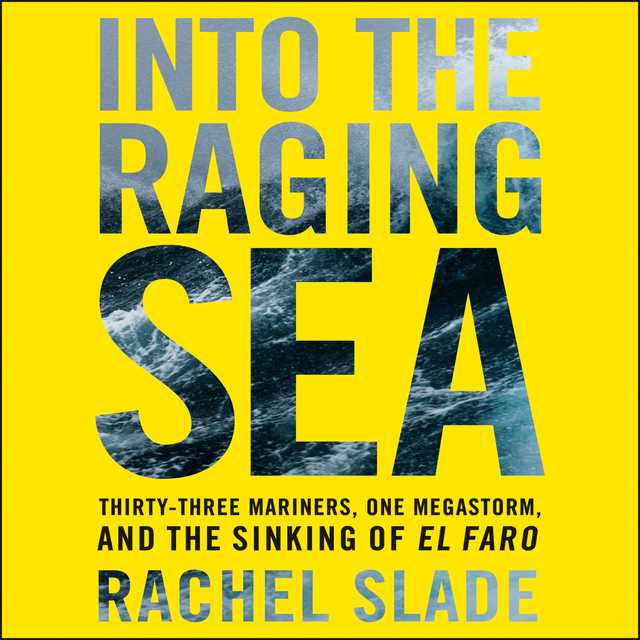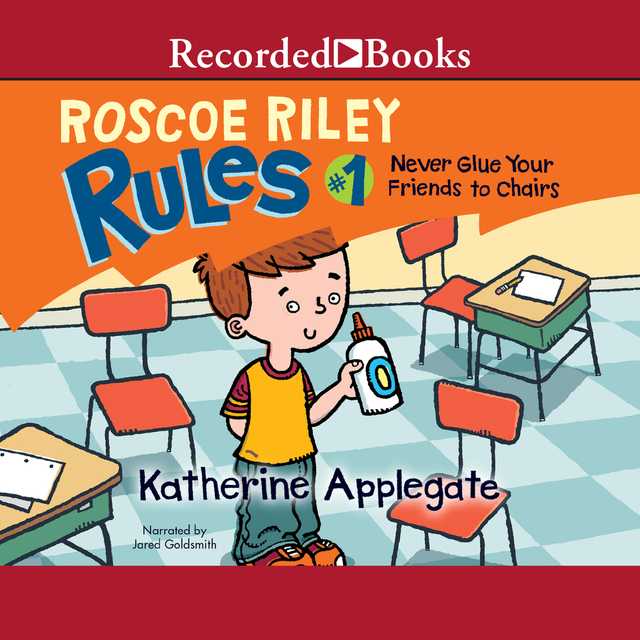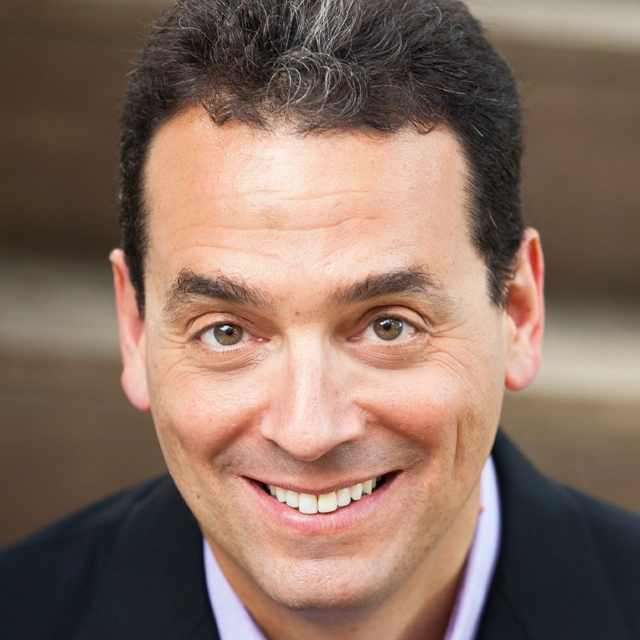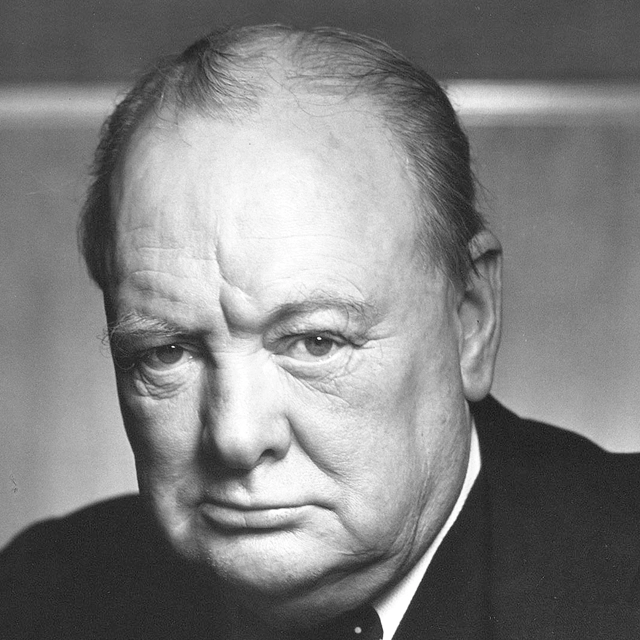Into the Raging Sea Audiobook Summary
“A Perfect Storm for a new generation, Rachel Slade’s Into the Raging Sea is a masterful page-turning account of the El Faro’s sinking.”
—Ben Mezrich, bestselling author of The Accidental Billionaires: The Founding of Facebook
On October 1, 2015, Hurricane Joaquin barreled into the Bermuda Triangle and swallowed the container ship El Faro whole, resulting in the worst American shipping disaster in thirty-five years. No one could fathom how a vessel equipped with satellite communications, a sophisticated navigation system, and cutting-edge weather forecasting could suddenly vanish–until now.
Relying on hundreds of exclusive interviews with family members and maritime experts, as well as the words of the crew members themselves–whose conversations were captured by the ship’s data recorder–journalist Rachel Slade unravels the mystery of the sinking of El Faro. As she recounts the final twenty-four hours onboard, Slade vividly depicts the officers’ anguish and fear as they struggled to carry out Captain Michael Davidson’s increasingly bizarre commands, which, they knew, would steer them straight into the eye of the storm. Taking a hard look at America’s aging merchant marine fleet, Slade also reveals the truth about modern shipping–a cut-throat industry plagued by razor-thin profits and ever more violent hurricanes fueled by global warming.
A richly reported account of a singular tragedy, Into the Raging Sea takes us into the heart of an age-old American industry, casting new light on the hardworking men and women who paid the ultimate price in the name of profit.
Other Top Audiobooks
Into the Raging Sea Audiobook Narrator
Erin Bennett is the narrator of Into the Raging Sea audiobook that was written by Rachel Slade
Rachel Slade is a Boston-based journalist, writer, and editor. She was a staff writer at Boston magazine for ten years, and her writing earned her a City and Regional Magazine Award in civic journalism. She splits her time between Brookline, Massachusetts, and Rockport, Maine.
About the Author(s) of Into the Raging Sea
Rachel Slade is the author of Into the Raging Sea
More From the Same
- Publisher : HarperAudio
- Abraham
- American Gods [TV Tie-In]
- Dead Ringer
- House of Sand and Fog
- Prey
Into the Raging Sea Full Details
| Narrator | Erin Bennett |
| Length | 11 hours 36 minutes |
| Author | Rachel Slade |
| Category | |
| Publisher | HarperAudio |
| Release date | May 01, 2018 |
| ISBN | 9780062699725 |
Subjects
The publisher of the Into the Raging Sea is HarperAudio. includes the following subjects: The BISAC Subject Code is Natural Disasters, Nature
Additional info
The publisher of the Into the Raging Sea is HarperAudio. The imprint is HarperAudio. It is supplied by HarperAudio. The ISBN-13 is 9780062699725.
Global Availability
This book is only available in the United States.
Goodreads Reviews
Brenda
May 09, 2018
This is very expertly researched and accounts for every bit of the varying events that caused the sinking of the El Faro.In short, the company TOTE fucked over their crew by having out of date software and hardware. Captain Davidson was more focused on his own career than getting safely to Puerto Rico. Danielle and Schultz were worried about coming on too strong. In short, bad business practice and poor communication between the ranks doomed the ship from the get-go. The author did a great job of explaining the industry and then drawing that into the narrative. It’s an easy book to read, and I appreciate the author’s effort to include as much as possible.
David
April 12, 2018
Received as an ARC via my employer Barnes & Noble. Started 4-9-18. Finished 4-12-18. Investigative journalism at its best. Will keep you involved from beginning to end like a good fiction book but it's all true. The sinking of this cargo ship and the deaths of its crew could have been avoided but for the ignorance, apathy, greed, and emotional instability of the parties involved. This book should be used as a textbook in all maritime academies in the world. It would also help to have it be read by every CEO in the world, but of course that will never happen. Being in a position of power doesn't mean you know everything that you need to know. Caused me to swear out loud at the guilty parties described at the end of this story--a visceral reaction.
Patrick
May 20, 2018
An excellent and harrowing account of the loss of a ship with 33 people aboard during Hurricane Joaquin in 2015. For those who wondered how a ship could have deliberately moved into the path of a tropical system like this the book provides the answer.Unlike the classic "The Perfect Storm," which this book might be compared to, the author of this book has access to a valuable resource - more than 25 hours of recordings made on the bridge of the ships officers conversations. Much like an airliner's black box, the device recorded conversations of those steaming into harms way, and it makes for harrowing reading. Particularly moving are the last minutes of the ship's life as the captain urges the frozen-in-fear helmsman to move toward him and potential safety.The book is divided in two parts. The first alternates the events aboard leading up to the ship's contact with the storm with chapters that paint a picture of key crew members and a history of merchant shipping in the U.S. and the importance of seaborne commerce that escapes most people. The second half details the search for the ship, it's black box, and the hearings to determine the cause. The book shows how a series of events, over years, and on the part of many parties - the government, the shipping company and the captain and crew - contributed to this tragedy.The only shortcoming of this book - in its electronic format - is the lack of a map that would be helpful in tracking the course of the ship and the storm. The print version provides this in endpapers, but it's lacking in the ebook version.
Tonstant
May 18, 2018
Shipping is dangerous work and ships run aground, capsize, founder, or sink nearly every day. Some of these tragedies, though, capture the imagination and inspire writers to explore the reasons for their loss and to find some deeper meaning. The sinking of El Faro in Hurrican Joaquin on October 1, 2015, is just such a storm and has already inspired at least three books so far. Rachel Slade’s Into the Raging Sea seeks to do more than tell the story of the loss of El Faro and its thirty-three crew members, she seeks to place it in the context of shifts in global trade, economic trends, and global warming. This makes for an absorbing and important narrative.Slade looks at several factors that led to the disaster. Most obviously, global climate change has warmed the ocean, creating more violent storms and far more damaging hurricanes. Climate-change deniers in Congress have underfunded the National Weather Service and the National Oceanic and Atmospheric Administration because they are too afraid of climate science to fund good weather science. It’s very important for climate-change deniers that no one understands weather and climate are not the same, because then they could not bring snowballs into the House of Representatives to expose their ignorance.She also looks at the leadership of El Faro, the captain, engineers, and officers. Certainly, it seems clear that Captain Davidson made several errors in judgment. He was unaware that his preferred weather update, a graphical representation of the weather, was several hours behind the National Weather Service whose update was textual and required being plotted by hand on their charts. He was responding to weather reports nine hours out of date and like many people, where there was a conflict in reports, he went with the report he liked best. He was also unreceptive to his subordinates advancing their concerns and concerned more about pleasing the on-shore executives than anyone else. He had recently been overlooked for a promotion and was resentful.She considers the design of El Faro which is the most fascinating part in that the ship was retrofitted a few times to adapt to changing shipping trends without thinking carefully enough about how those changes affect the ship’s balance and seaworthiness. They were allowed again and again to take on more cargo, allowing the ship to rest lower and lower in the water without noticing that the vents on the side allow water in and are much lower. If you have a three-inch glass and it’s got a vent at two inches, the water does not wait to reach three inches before beginning to fill the glass.Then she looks at management at TOTE, the company who owned El Faro. A more feckless bunch would be hard to find. It’s like they all watched “Wall Street” and though Gecko was the hero, not the villain. They fire the most experienced to replace them with cheaper and younger workers. They have someone unqualified to be an engineer on a ship overseeing all the ships. Their lead contact for ships at sea travels without leaving someone in charge. Sadly, because maritime law is heavily biased toward shipowners, they can cast all the blame on the captain.There’s more, nonexistent inspections or next-to-worthless inspections. Like Wall Street, most maritime regulation and inspection is carried out by an organization created, funded, and in service to the shipowners. As in other industries, global trade patterns, outsourcing, and trends in labor have weakened the power of labor to advocate for safety. So many factors come together and you begin to wonder why there have not been more tragedies.Rachel Slade does a great job of writing a compelling narrative that grabs your interest immediately. She is good at short character sketches, but her real strength is explaining the many unseen factors that led to disaster. In capturing the many historical and global trends that influenced decisions on the ship’s design, redesign, management, and maintenance, she is masterful.I think she sometimes reaches unsupported conclusions when describing people’s character, particularly the women who are involved. For example, the crewing manager comes in for some serious criticism and the kind of gendered gossip that women in leadership often attract. However, her most significant act was ensuring Captain Davidson didn’t get promoted to the new ships. Considering his performance on El Faro, that sounds like a good decision to me. The other woman also came in for some of the same sort of commentary from men who worked with her, that she was scattered and forgetful and of course, rumored to have gotten her job because she filed a sexual harassment claim. But, of the officers on the bridge, she seemed to be more aware than anyone they were in danger and did more than anyone to point it out to the captain. If he had been willing to listen to her and if other officers had backed her up better, they would have changed course. Perhaps because Slade is also a woman, she didn’t want to seem partial, so she accepted the criticisms of these women even though they fit into the pattern of criticism women who seek jobs in men’s space always get. I think she should have taken more care to put those criticisms in the voice of the people who gave them, rather than in the author’s voice. That brings me to my second criticism. She tells us what people are thinking. Well, we know what they are doing and saying, but we can’t know their thoughts and motivations.Lastly, I wish she had provided endnotes or footnotes. She lists her main sources, but she made some assertions that I would like to check, for example, that Florida is the most racist state. It sure could be and I assume she made that assertion based on the number of lynchings in Florida, but I don’t know because it is not sourced. There are other state’s that can make that claim based on other rationales. For example, my own state of Oregon prohibited Black people from owning land or a business or signing a contract in the state. Iowa and Indiana required black people to post a bond that would equal $15,000 in today’s dollars just to enter the state.These are minor complaints when stacked against the scope of her research and the quality of her analysis. This is a fascinating story about a tragedy that could have been avoided and identitifies problems that probably guarantee it will happen again.I received an ARC of Into the Raging Sea from the publisher through a Shelf Awareness drawing.Into the Raging Sea at Harper CollinsRachel Slade interview at 98.9 WCLZ★★★★https://tonstantweaderreviews.wordpre...
Olivermagnus
February 29, 2020
Shortly before dawn on Thursday, October 1, 2015, an American merchant captain named Michael Davidson sailed a 790-foot U.S.-flagged cargo ship, El Faro, into the eye of a Category 3 hurricane near the the Bahama Islands.This book was a riveting sea story of a horrible disaster. Many readers will enjoy it purely for that reason, but it's so much more. It details the struggles and challenges faced by mariners making a living on the sea, and the impact our society has on people when it makes decisions and laws based on economics, without also considering safety as equally important.I was completely oblivious to the difficulties and risks facing the men and women who deliver our goods across the sea. The chapters alternate between the crew profiles and the more dry statistics of the ship, computer systems, and history of sea shipping. But I did find that history much more interesting than I expected I would.I found this book to be a gripping narrative of a cargo ship’s tragic voyage. This is a well written book, and when the author sticks to the main narrative is quite compelling. I prefer not to have to read every author's political opinion, so I could have done with less social commentary. However, it's full of fascinating detail for anyone remotely interested in ships or shipping.1347
Mrtruscott
February 24, 2019
Not my usual reading, but I read an excerpt in Vanity Fair and was completely knocked out by the author’s ability to make me see the crew of El Faro, feel like I knew them without being all corny/Hollywood about it — and I could envision the boat, the towering stacks of containers, imagine the terrific power of the sea. 33 people on a 700+foot boat vs. hurricane. I’d never given much thought to the importance of shipping in the global economy, even though I see containers leaving the Port of Seattle on our streets and highways every day. That’s changed.The heartbreaking story of El Faro is also a cautionary tale about corporate malfeasance, the perils of putting numbers guys in charge when lives are on the line. Add in rapidly warming oceans....and this was a heartbreaking and terrifying book.
Melanie
September 16, 2018
I don’t usually like “boat, sea-faring, arrrr” kind of books; however, this was fascinating! A true story about the El Faro that sailed out of Jacksonville headed to Puerto Rico in the midst of a storm that they knew nothing about. It was heartbreaking but also super interesting. I learned a lot about the shipping industry (which most of take for granted), a lot about the Coast Guard and about the types of people that run these ships and love the sea. Personally, my husband and I boat around Jacksonville and are always in awe of these big ships when we are able to see one up close. Now I will have a different perspective!
Nadine
December 03, 2018
Wow, this was a fantastic book. It's a real page-turner of a non-fiction book; I read many chapters nearly breathlessly. I also learned a lot that I didn't know going in--for example, it goes into detail about the international shipping industry, the Coast Guard, and the merchant marines. It's a tragic story that has gotten a well-deserved and skillful write-up in this book.
Madeline
August 04, 2018
I love reading about the ocean and boat disasters (I love boats and airplanes...), and I remember when this boat sank, so I was eager to learn more. However, while I was reading this, I would tell people about it, and I was surprised at how many people had completely forgotten this had occurred! So I suppose it's for the best that Slade has written this gorgeous book to keep the memory of El Faro alive, and emphasize the problems with the United States shipping industry. I heard Slade speak about this book on the New York Times Book Review podcast, and her passion for this story was palpable, both in her interview and in this book. She makes what some may consider a dry topic compelling and heartbreaking, offering a glimpse into both the human side of the story, and the industry environment that led to such a disaster. Slade has poured so much time into researching this disaster, coming at it from every angle, and I felt that she left no stone unturned. This is an amazing account of the El Faro disaster, and offers a lot for us to learn from.
Onceinabluemoon
May 26, 2018
This is my kind of thriller, I was so nervous reading this that I had to google the outcome which truly broke my heart. An incredibly detailed account of a tragic ending, I blistered through the book, I am always in awe of the sea.
Jodi
September 15, 2019
This is a powerful and moving account on par with the best of marine non-fiction and the finest investigative journalism blockbusters.Slade has done the seemingly impossible through impeccable research and unflinching passion. The first part of the book is as taut and tense as Junger’s The Perfect Storm. The difference? Every bit of dialog was recorded by a black box of sorts in the ship’s bridge, and Slade is merely curating and reporting it. Drawing on interviews with family members, the doomed mariners are expertly drawn. It’s compelling and harrowing to read.The second part of the book explores the complex recovery and investigation of this shipping disaster. Slade leaves no stone unturned. She’s unwilling to lay the blame squarely on the captain although surely he deserves some blame. Taking on the shipping industry, the lack of regulation, the underfunding of the Coast Guard, the ubiquitous corporate greed and executive stupidity, Slade makes us hang our head in shame and disbelief at our consumer hubris and lazy avoidance. My only quibble, and it is a small one barely worth mentioning, is Slade’s use of first and second person. I wondered why she was inserting herself into the story. Was this a new journalism twist? Was it adding to the story, or was it detracting from it? I finally decided that her passion and biases were evident in any case. Perhaps It was more of a recognition and acknowledge of her naked honesty and her unwillingness to hide behind the third person.
Patricia
February 23, 2021
I learned SO much from this book about the maritime industry, the Merchant Marines, as well as shipping in general. I was marking pages left and right so that I could go back and look up various topics later on. Sadly, this was a completely avoidable tragedy; a perfect example of how a cocky attitude can be life threatening. If you decide to read this book make sure to look up how a pilot boards a vessel when preparing to guide it into or out of port. My heart was racing and my hand was covering my mouth as I listened to the author describe the process. I had to see it with my own eyes so I found a few videos on YouTube. What an absolutely nerve wracking method!! Pardon my Spanish but that takes some cojones!!I love reading books that broaden my knowledge and this did exactly that and then some. May the crew of El Faro rest in eternal peace. *faro means lighthouse in Spanish
Jill
October 20, 2018
I found this book so interesting. I have learned a lot about merchant shipping and it's history but mainly I was drawn into the story of how this avoidable tragedy came about and what they went through.
Jeff
January 03, 2022
”In the end, it didn’t matter. The ocean had found another way in.” Another thing I’ve learned in life is to never to challenge a hurricane. I’ve spent a career in emergency management and, even after more than twenty years, the aftermath of these monstrous storms can still shock and daze even the most jaded first responder. And while my time has always been as a landlubber, I can imagine it must be far worse at sea, where the atmospheric engine feeding these beasts is still full of fuel: warm water and cork-screwing winds. My disaster library has a shelf of ‘ship-versus-storm’ stories – Hurricane Mitch against the four-mast schooner Fantome and the replica-boat HMS Bounty against Superstorm Sandy -- both are recommended. Add to that Rachel Slade’s near-perfect Into the Raging Sea, a gut-wrenching, impossible-to-put down account of the American container ship El Faro’s disastrous collision with Hurricane Joaquin.It’s not hyperbole to say that this is sea yarn like no other. Mic’s were installed within the El Faro’s pilot house, creating the nautical equivalent of an airplane’s black box, which began recording as soon as the ship left port and stopped just seconds before El Faro met its violent end in the raging waters of the Caribbean. Unlike other sea stories where investigators must often speculate ‘what was the crew was thinking?’ or ‘did things happened this way or that?', the transcription of the last days of the El Faro is the chilling post-mortem of ghosts speaking from beyond the grave. It paints a vivid picture of the crew, their relationships, the flawed decisions, the terrible consequences, and the gut-wrenching end that haunts well past the book’s final printed page. Slade weaves a taunt and tragic thriller that is near-perfect, white-knuckling your fingers around the spine of the book as El Faro pitches and yaws in gale-force winds and churning white-caps while tugging at your heartstrings as you turn the pages for those in the heart of the storm. Maybe it's just slightly here and there (for a few sentences at most) as Slade tries to conflate Presidential politics, guns and militias with the story of a shipwreck – that didn’t work for me at all – but setting aside that small peccadillo, this book is as much a heart-breaking high seas battle of endurance as it is a catechism on leadership. It’s about poor decision-making, the folly of absentee management, the curse of non-accountability, pressured leaders and courageous followers, the bear-trap of incorrect situational awareness in dangerous scenarios, and most damningly, the reality rift between those at the top and those on the scene.Read this book! Whether you have a passion for maritime tales, disaster stories or just want the best seafarers’ yarn since The Perfect Storm, Into the Raging Sea is compelling nonfiction expertly told. And though it doesn’t say it on the cover, it just might be one of the best case studies for managers in high-risk professions on how bad decisions are made, their appalling consequences, and maybe how to avoid the repetition of tragedy.
derek
December 30, 2019
This book is beautifully structured and genuinely moving. I cried, I was mad ... I felt like I was a part of this horrible story. I would have given it 5 stars but didn’t for 2 reasons: 1. The author never interviewed anyone from TOTE and 2. The author injected her own politics into the conclusion of the book. Neither of these are egregious but having all parties interviewed for the book would have felt fairer (and believe me I do not doubt what is written about TOTE executives here, but it felt like it was missing here) and on the second point ... the power of this story lies in the facts of the stories. I felt the book could have chopped off the epilogue and been stronger for it. I won’t ruin anything but the epilogue sits awkwardly between the last chapter and a memorial section that would fit together beautifully. But, having said this I highly recommend this book. It is excellent!
Most Popular Audiobooks
Frequently asked questions
Listening to audiobooks not only easy, it is also very convenient. You can listen to audiobooks on almost every device. From your laptop to your smart phone or even a smart speaker like Apple HomePod or even Alexa. Here’s how you can get started listening to audiobooks.
- 1. Download your favorite audiobook app such as Speechify.
- 2. Sign up for an account.
- 3. Browse the library for the best audiobooks and select the first one for free
- 4. Download the audiobook file to your device
- 5. Open the Speechify audiobook app and select the audiobook you want to listen to.
- 6. Adjust the playback speed and other settings to your preference.
- 7. Press play and enjoy!
While you can listen to the bestsellers on almost any device, and preferences may vary, generally smart phones are offer the most convenience factor. You could be working out, grocery shopping, or even watching your dog in the dog park on a Saturday morning.
However, most audiobook apps work across multiple devices so you can pick up that riveting new Stephen King book you started at the dog park, back on your laptop when you get back home.
Speechify is one of the best apps for audiobooks. The pricing structure is the most competitive in the market and the app is easy to use. It features the best sellers and award winning authors. Listen to your favorite books or discover new ones and listen to real voice actors read to you. Getting started is easy, the first book is free.
Research showcasing the brain health benefits of reading on a regular basis is wide-ranging and undeniable. However, research comparing the benefits of reading vs listening is much more sparse. According to professor of psychology and author Dr. Kristen Willeumier, though, there is good reason to believe that the reading experience provided by audiobooks offers many of the same brain benefits as reading a physical book.
Audiobooks are recordings of books that are read aloud by a professional voice actor. The recordings are typically available for purchase and download in digital formats such as MP3, WMA, or AAC. They can also be streamed from online services like Speechify, Audible, AppleBooks, or Spotify.
You simply download the app onto your smart phone, create your account, and in Speechify, you can choose your first book, from our vast library of best-sellers and classics, to read for free.
Audiobooks, like real books can add up over time. Here’s where you can listen to audiobooks for free. Speechify let’s you read your first best seller for free. Apart from that, we have a vast selection of free audiobooks that you can enjoy. Get the same rich experience no matter if the book was free or not.
It depends. Yes, there are free audiobooks and paid audiobooks. Speechify offers a blend of both!
It varies. The easiest way depends on a few things. The app and service you use, which device, and platform. Speechify is the easiest way to listen to audiobooks. Downloading the app is quick. It is not a large app and does not eat up space on your iPhone or Android device.
Listening to audiobooks on your smart phone, with Speechify, is the easiest way to listen to audiobooks.






























